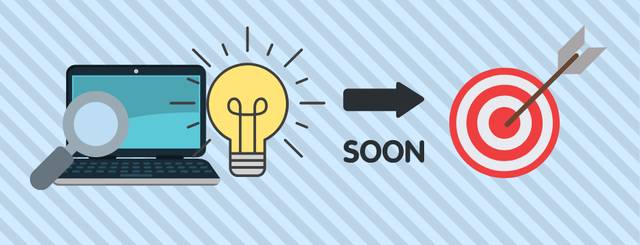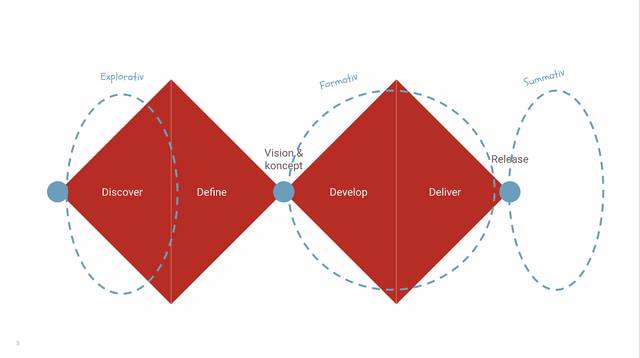
Conducting research for product development is an insightful task, and as we have mentioned before, it is important to triangulate research by combining different methods (see the post When Did Data Become Only Quantitative? but also to ensure that the data is accessible and traceable to make data-driven decisions.
However, the research we do has different purposes, which affects both the methods we use and the results we can expect. For example, usability tests can be conducted for a variety of reasons, and it is important for us to consider what these reasons are before we start. This way, we ensure that we get a useful result.
To explain the overall mindset, there are mainly three forms of research related to product development:
Just the act of considering what type of research you intend to conduct before starting a research effort will help you move forward. It will focus your work on methods and approaches that also fulfill the overall purpose. So let's go through them!
If you are pondering something like "we need to do something new/different!" but have no idea how to take your thought further, you probably need to conduct exploratory research. This means you conduct work without really knowing what you might find. Even this form of research needs to have some direction (otherwise it will never be completed), but a research question could be formulated something like this:
"How can we as an e-commerce reach a new target group, and what changes do we need to make for this new target group to feel that they want to shop with us?"
The expected result from exploratory research is interesting areas to work on and a direction for continued product development. Do not expect concrete solutions after such work but rather that you can start conducting design sprints and sketch workshops based on the results and then iterate sketches and designs.
Examples of methods for exploratory research are in-depth interviews, ethnographic studies, customer journey mapping, etc. Simply methods where the focus is to more openly map users and eventually find patterns in behaviors and needs.
If you have come so far that you have a solution on the screen in front of you and are wondering if it works, it is time to use formative research. The word "formative" is perhaps best known from the school world where they talk about formative assessment, i.e.:
"An active work with formative assessment means striving for a learning culture and a teaching climate where students want to learn and get the opportunity to learn how to learn." (Swedish National Agency for Education)
In product development, this practically means that we evaluate what we do continuously, while we design it, to know if we are on the right track. If we are not, we need to know so that we can change our design and not spend energy on something that will not work in the end. Formative research can advantageously be conducted in several phases of the design, both on early hand-drawn concepts and developed well-designed interfaces. However, the purpose is to evaluate if the design holds, so you must always be prepared to rethink. An example of a research question could be:
"How does the target group use the new purchase flow, and what potential obstacles are there for them to make it all the way?"
The main methods for formative research are usability tests and A/B testing. For more information about these, you can read more in our previous posts Conducting Usability Tests Online - 5 Tips and Tricks, Usability Test: Three Techniques + Three Tools a Test Leader Uses, and How Do I Succeed with A/B Testing?
Formative research can advantageously be conducted in several phases of the design
Even "summative" is most commonly found in the school world and is described as follows:
"Summative assessment is a form of assessment that summarizes a person's accumulated knowledge at a specific point in time." (Wikipedia)
As it sounds, summative research is about evaluating how a service is doing in its current state. If we conduct usability tests for an existing product, perform a heuristic evaluation, or perhaps dig into analytics, it is summative research. The purpose of this form of research is to map existing usage and existing flows to identify areas that can be improved. At Conversionista, we regularly conduct conversion evaluations and summative usability tests to help our clients move forward with their services and sites.
The research question could thus be formulated as follows:
"How is the service used today, and what potential for improvement exists for users to convert to a higher extent?"
If you have not conducted a summative usability test on your service before - do it immediately! We promise you will learn a lot!
If you have not conducted a summative usability test on your service before - do it immediately!
That said, research for product development is not an effort that is done once and then never again. Research is conducted to learn about our users to create change, which also means it needs to be done continuously and always. The different types of research are linked to different parts of a design process, which means that not all types of research need to be conducted evenly. It simply depends on where you are in the process.
This is what it might look like for those working according to Double Diamond:

In the survey "The State of User Research" published in January 2019, 75% of respondents stated that their company does not do enough research, while another study from November 2019 showed that more and more companies have realized that "involving research as early as possible is essential for a product to succeed" (freely translated from Four Top UX Challenges for 2020 and How to Solve Them). The challenge in the next step is to incorporate ongoing research into daily work, but to get that far, we need to start somewhere.
So if you feel that your company does not conduct enough research, you are not alone. With a well-oiled research machine, hypotheses for both ongoing product development and the optimization process can become so much stronger, so get started if you haven't already. A first usability test is a good start!
To get more inspiration on how to gather all this research and make use of it over time, we recommend our previous posts on Atomic Research; Everything You Need to Know About Atomic Research.
Good luck with your research!